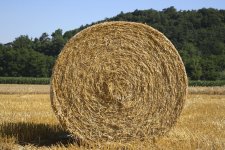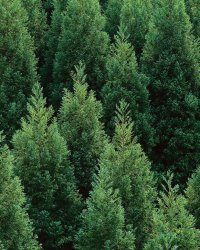

To send a message to an author, click on the author's name at the end of the article.
This Month in Ag Connection | Ag Connection - Other Issues Online

More than 100 children are killed and 33,000 injured in farm-related accidents across the nation each year, according to the National Safety Council. Now that schools are closed for the summer, parents should remember that summer is the peak time for farm accidents involving children.
Families should take extra care to see that their children are doing age-appropriate farm work. Children from non-farm backgrounds must be educated on farm related hazards and watched carefully. Will visiting friends distract farm children during chores, increasing hazards to everyone involved? Identify danger areas, set rules for children, and provide strict supervision. Be sure children have safe playing areas when not involved in farm work.
Nearly half of deaths and injuries come from farm machinery, with tractors being the leading cause. Be sure young people are fully trained in operating tractors both on-farm and on-road. Retrofit all tractors manufactured before 1985 with a rollover protection structure (ROPS) and seat belt.
Injuries to children and teenagers can happen when working around livestock. Seventeen percent of all farm injuries involve animals, according to the National Safety Council. Children should be taught to be calm, move slowly and avoid loud noises around animals. They should wear steel-toed shoes and approach large animals at the shoulder.
Finally, be a good role model, and teach safety to your children by example.
Source: Karen Funkenbusch, University of Missouri Extension Agriculture Engineer
This Month in Ag Connection | Ag Connection - Other Issues Online
Hay storage can have a significant impact on hay cost and hay quality. Many hay storage management practices will not increase costs. For example, if possible, place bales tightly end-to-end oriented in rows running north and south on a slope. Orienting hay this way minimizes the exposed bale face and allows the sun to pass over and dry the entire bale rather than just the south side. Putting a minimum of three to four feet of space between rows allows adequate air flow and sun exposure to permit drying. Bale rows touching each other will allow water to run off one bale into the middle of the other thus reducing drying on the bottom half of the bale.

Proper bale yard location can also minimize hay waste without increasing storage costs. Do not store bales in waterways, low lying areas, under tree lines or in shaded areas since these areas either concentrate water into the bale or reduce drying after rain.
Breaking ground contact with hay is important to minimize waste since bales will wick moisture from the ground. Use a gravel pad, pallets, pipe or railroad ties to break ground contact and minimize hay and nutrient loss due to water. Making dense bales that maintain shape reduces the percent of the bale in contact with the ground. Also, make bales as large as your equipment can handle to concentrate more hay in the center of the bale.
University of Tennessee extension specialists conducted a trial to compare different methods of storing large round bales of grass hay. The hay was cut and baled in June. The bales were weighed at the time of harvest and storage. Then the bales were weighed again the following January at the time of winter feeding. Bales that were stored on the ground with no cover lost 37% of their weight. Bales stored on used tires but with no cover lost 29%. Bales that were stored directly on the ground but were covered with a tarp also lost 29%. Hay bales that were stored on used tires, and also covered with a tarp lost only 8%. Bales that had a net wrap and were stored on the ground lost 19%. Bales that were moved inside a barn lost only 6%.
Storage losses make poor quality forage more expensive due to dry matter and water soluble nutrient losses leaving a greater portion of fiber behind. As hay quality increases the cost of storage losses will also increase. To determine if reducing hay storage losses will offset alternative hay storage methods, divide the value of the hay by the percent fed after losses. So, $50 per ton hay with15% storage loss becomes $59 per ton of lesser quality hay. In addition to storage loss, cattle also waste greater percentages of poorly stored hay during the feeding period.
These inexpensive ideas will help get more nutrients from the hay field into the animals. This information was taken from articles by Dr. Justin Sexten, Extension Beef Specialist at the University of Missouri and a newsletter article by Dr. Glen Selk at Oklahoma State University.
Source: Gene Schmitz, MU Extension Livestock Specialist
This Month in Ag Connection | Ag Connection - Other Issues Online
Typically thought to be "bulletproof", something is happening to our red cedars. In recent years there have been more and more reports of unexplained death of eastern red cedar throughout Missouri.
A recent visit to a concerned landowner and following laboratory samples collected from dying red cedars, confirmed the culprit to likely be Heterobasidion annosu. H. annosu is the causal agent of Annosum root rot. However, we have reason to believe that other factors may be contributing to this problem.
Red cedars are hardy trees. Death is usually caused by fire, chainsaws, and now possibly Annosum root rot. Many diseases of red cedar are well known such as Phomopsis and cedar-apple rust, but these diseases are rarely severe or fatal.
Annosum root rot is thought to be the most severe disease of red cedar, and can cause significant losses. Infection often occurs through spores infecting wounds at the base of trees. The fungus initially causes a "pecky" white rot. In later stages, a yellow-stringy rot on infected roots eventually girdles the root collar.

Fruiting bodies of the fungus are produced at the soil line of infected trees and spread windblown spores to fresh wounds on healthy trees. The fruiting bodies look similar to "shelf fungus" but are leathery with a tan upper coloration and a cream colored margin and underside. The dust like spores can easily blow in the wind up to a mile or more.
Underground spread of the disease also occurs through root contact of infected trees with adjacent susceptible trees. This underground transmission often results in an expanding circle of dying trees.
Initial symptoms are decline of the tree and browning over the course of one to two growing seasons. Infected trees can appear to die quickly because the above-ground symptoms do not show up until half of the root system is infected. Then, the results are a rapid symptom development and death. The most oblivious sign of Annosum root rot is the brown and white leathery fruiting bodies growing on the base of the trunk at the soil line or on exposed infected roots.
Since H. annosu is a root pathogen it can be difficult to control. Once a tree is infected, there are no control measures available to cure the tree. The best advice to landowners is to reduce stress on the trees and avoid wounding the trees when possible. Here is a web site with more information on Annosum root rot:http://www.cals.ncsu.edu/course/pp318/profiles_mirror/annosum/arm.htm
Source: Chris Starbuck, University of Missouri Extension Woody Plants Specialist and University of Missouri Extension Jim Jarman, Agronomy Specialist
This Month in Ag Connection | Ag Connection - Other Issues Online
Are you considering the purchase of a new or a "new to you" business vehicle? The Treasury's "listed property" regulations have created a complex maze regarding which vehicles have limited annual depreciation deductions and which vehicles can be totally expensed.
For a refresher - Congress came up with the listed property rules to discourage extravagant deductions on luxury vehicles and to help insure those deductions were really for vehicles used in a business. Unfortunately many legitimate and expensive vehicles - like farm pickups get caught in the listed property net.
The important thing for taxpayers to realize is that different vehicles have different tax deduction consequences and reporting requirements. Under the listed vehicle regulations - vehicles are divided into five categories. The most restrictive category is a passenger automobile, which is a car that has an unloaded vehicle weight of 6,000 pounds or less. The first year depreciation for vehicles in this category is limited to a maximum of $2,960 (which includes Section 179 expensing). Under the new stimulus package, an extra $8,000 of first-year bonus depreciation is available for these vehicles.
The next most restrictive category is for light trucks and vans that have a loaded gross vehicle weight rating of 6,000 pounds or less. The first year depreciation these light pickups and vans is limited to a maximum of $3,060 (which includes Section 179 expensing). Under the new stimulus package, an extra $8,000 of first-year bonus depreciation is also available for these vehicles.
I'll combine the next two categories which are heavy pickups with at least a 6 foot cargo area and "qualified non-personal use vehicles". Business vehicles in either of these categories have no annual depreciation limits and qualify for full Section 179 expensing. Pickups qualify for this category if they have over a 6,000 pound loaded gross vehicle weight rating and have at least a 6 foot cargo area. A qualified non-personal use vehicle is defined as any truck or van that, by reason of its design (i.e. having permanent shelving, exterior advertising, attachments, etc.) is not likely to be used more than a de minimis amount for personal purposes.
The last category is sport utility vehicles (SUVs). These are typically heavier vehicles that don't fit the weight or definition requirements of the previous categories. As an example, a heavy-duty pickup with a short-bed would be considered an SUV, because the cargo bed is less than 6 foot in length. The deduction of regular and bonus depreciation for these vehicles is not limited, however, Section 179 expensing in the year of purchase is limited to $25,000.
Many business owners are now finding it beneficial to consult with their tax professional when considering business vehicle purchase options. There can be significant differences in the depreciation allowed - depending on the type and size of vehicle purchased.
Source: Parman R. Green, University of Missouri Extension Ag Business Mgmt. Specialist
This Month in Ag Connection | Ag Connection - Other Issues Online

The MU Extension Central Missouri Regional Agronomy Specialists will be offering crop scouting schools this summer at several locations. The purpose of the schools is to educate those interested in using integrated pest management (IPM) techniques in making informed decisions regarding agricultural pest control. The one-day events are open to producers, consultants, crop scouts and all agribusiness professionals. Topics to be covered by MU Extension campus personnel include field crop scouting techniques and IPM principles as well as updates on weed, insect and plant disease control. The following are the dates, locations and local arrangement contacts for the programs.
Monday, June 15: Keytesville (local contact person is Wayne Crook, 660-288-3239)
Wednesday, June 17: Boonville (local contact person is Todd Lorenz, 660-882-5661)
Monday, June 22: Versailles (local contact person is Joni Ross, 573-378-5358)
Wednesday, June 24: Fulton (local contact person is Jim Jarman, 573-642-0755)
This Month in Ag Connection | Ag Connection - Other Issues Online
Publishing Information
Ag Connection is published monthly for Northeast and Central areas of Missouri producers and is supported by the University of Missouri Extension, the Missouri Agricultural Experiment Station, and the MU College of Agriculture, Food and Natural Resources. Managing Editor: Mary Sobba.